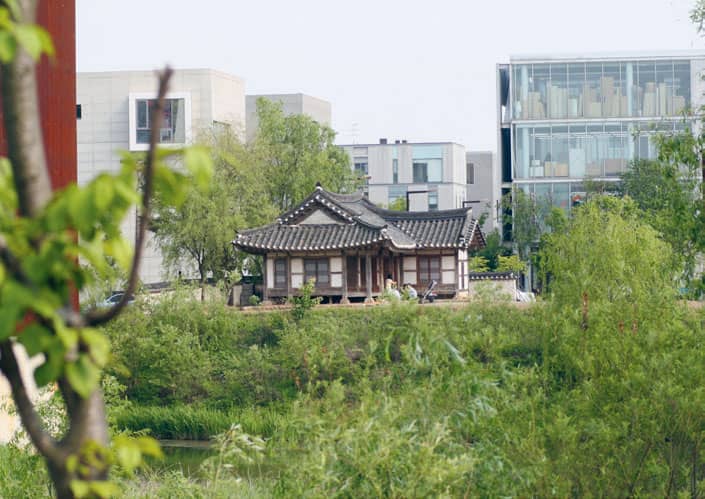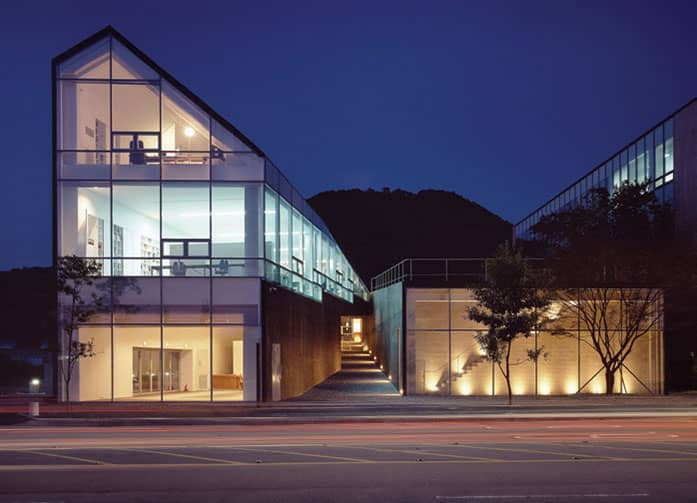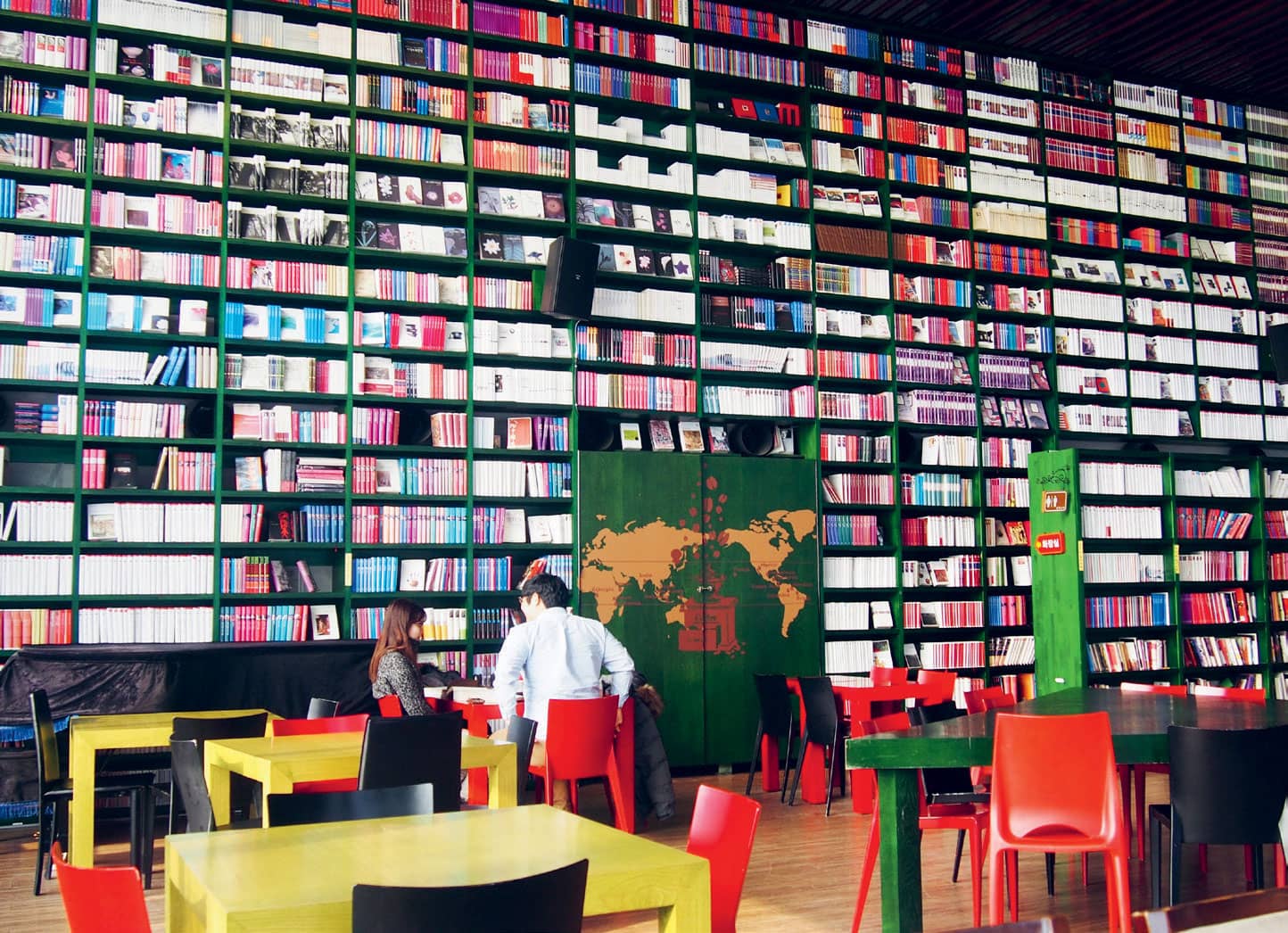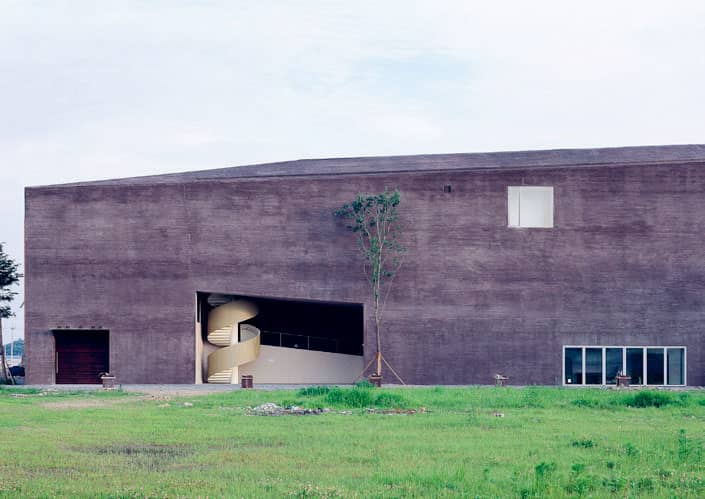PAJU
SOUTH KOREA
Rainbow Publishing House was established with the dream of telling the stories of the ordinary people who helped create today’s Korea.’
DaeWha Kang
Paju Book City stands alone among members of the International Organisation of Book Towns in that while it has bookshops, book cafés and publishers, it has nothing else but. Every single building and person here is dedicated to making, publishing, selling and promoting Korean books (the cafés do sell coffee too).
It is also located in perhaps the most unlikely location of any book town – the reclaimed marshy flood plain near the Korean Demilitarized Zone, just half a dozen miles south of the border with North Korea. Indeed, the siting of Paju Book City was a guiding principle by the founding publishers who wanted to emphasise the importance of the common good above self-interest. While at its heart was a commitment to print, the plan was to build somewhere as an antidote to the perceived overdevelopment of Seoul, a spot which put humanity and historic cultural values first and worked in harmony with the natural wetlands in which it operated. “It is not hyperbole to claim that this is one of the most extraordinary and most unsung cultural and architectural developments in the world,” design critic Edwin Heathcote wrote in the Financial Times in 2009.
Since 1989 major international architects and designers have been engaged in turning Paju into a unique site. There is a traditional Korean ‘hanok’ house at the centre of the buildings, a symbol of the goal to ensure Paju is in harmony with its surroundings. It has been criticised as a slightly sterile industrial park, but others have applauded its quiet, tree-lined, largely traffic-free streets dotted with wooden benches and unusual features, such as the miniature railway which runs around the children’s bookshop Alice’s House.
There are book cafés everywhere, including the popular Hesse on the third floor of the Pinocchio Museum (Hoedong-gil). The vast Book House Foresta (Heyri) is a cultural arts complex on three floors where you can sip house-roasted coffee against a backdrop of floor-to-ceiling bookshelves.

The 100-year stair at Rainbow Publishing House glows at dusk in Paju.
The brainchild of publisher Yi Ki-Ung, but now owned by Korea’s Ministry of Culture, Sports, and Tourism, today there are around 250 publishers based in Paju and 10,000 people working here (though very few live here and most commute in, some in special buses owned by publishers). It is divided into three zones – a Publishing District, a Printing District and a Support District. Books – mostly Korean but some in English and Japanese – are sold from the ground floor premises of various publishing companies as well in bookshops. As well as its annual Booksori book festival, which attracts up to half a million visitors over a week and a half of events, there are the Paju book awards for Asian writers, editors and designers for promoting the region’s culture.
There is a remarkable dedication both to the history and the future of print in Paju. The Moveable Type Workshop is a working printers, producing collections of Korean poetry and furnished with endless shelves stuffed with lead type. It is also a reminder that Korea was using moveable-type printing methods 200 years before Gutenberg. Meanwhile, the Forest of Wisdom (Hoedong-gil) features eight-metre-high shelves and a collection of 50,000 donated books, many provided free by academics and other specialists. Volunteer book advisers help readers search the stacks, and there is also an on-site hotel, so visitors can read books twenty-four hours a day. Lectures and book clubs are run throughout the year, and in May Paju hosts a children’s book festival.
The 100-year stair at Paju Book City
“Rainbow Publishing House was established with the dream of telling the stories of the ordinary people who helped create today’s Korea,” says its designer, DaeWha Kang.
“During the twentieth century, Korea was devastated by a period of colonial occupation, the Second World War, and the Korean War. From the extreme poverty of that time, the country has become one of the wealthiest and most advanced countries in the world. Although famous leaders were important for that transformation, there are also countless stories of ordinary people who lived extraordinary lives while rebuilding their country. Rainbow Publishing House takes its name from the idea that although each of those ordinary lives may be a small spark of light, when seen as a whole the many sparks create a colourful rainbow.
“The 100-year stair forms the main façade of the building. A bookshelf rises over four stories, with one shelf for each of the years of the twentieth century. The main stair wraps around the bookshelf, and a tall window gives views over all of Paju Book City. As Rainbow publishes small print run biographies of the people who lived through Korea’s rebuilding, the books will be placed on the shelves corresponding to the year in which each person was born. Over time, the shelf will fill with the stories of Korea’s rebirth, and all who use the building will be taking a journey through those histories and those lives as they take the stairs.
“The founders of Rainbow Publishing House live on the top floor, and one of our motivations for making the stair a beautiful and prominent feature was to encourage stair climbing rather than use of the elevator. Recent medical research has found a direct correlation between stair climbing and mortality rate, with those climbing five flights of stairs a day living 18 per cent longer than others. Giving beautiful views of the book city and a meaningful anchoring of books makes the staircase a more attractive option and encourages healthy living. An interactive tablet at the top of the stairs allows each of the four family members to tap in after taking the stairs, automatically recording the day and time they climbed. The display shows their progress and allows each a healthy competition with the others for who can do more. The tracking of this data is presented over time, telling the story of the family’s health and activity over the years and decades. In this way, the story of a healthy and growing family is told in the same space as the story of a publishing house and of a country.”

The Korean ‘hanok’ house in the centre of town, an architectural representation of the desire for harmony among people and place.

Kyomunsa specialises in scientific publishing and uses this building as both its office and book warehouse.

Two customers enjoy coffee surrounded by walls of towering books at Book House Foresta.

The spiral staircase staff entrance at Kyomunsa publishers, designed by Daniel Valle Architects.